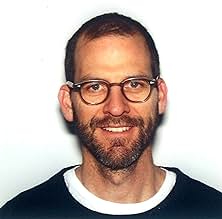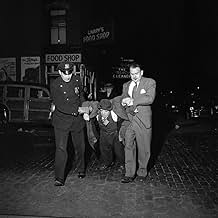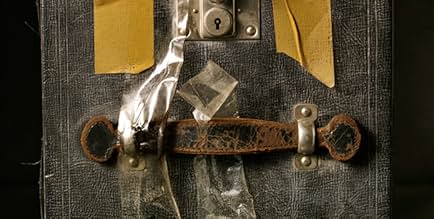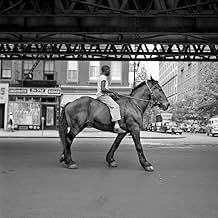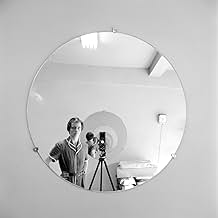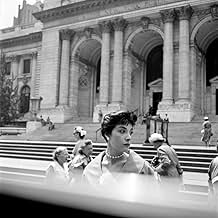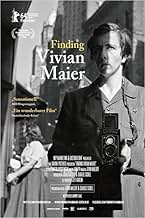IMDb RATING
7.7/10
16K
YOUR RATING
A documentary on the late Vivian Maier, a nanny whose previously unknown cache of 100,000 photographs earned her a posthumous reputation as one of the most accomplished street photographers.A documentary on the late Vivian Maier, a nanny whose previously unknown cache of 100,000 photographs earned her a posthumous reputation as one of the most accomplished street photographers.A documentary on the late Vivian Maier, a nanny whose previously unknown cache of 100,000 photographs earned her a posthumous reputation as one of the most accomplished street photographers.
- Directors
- Writers
- Stars
- Nominated for 1 Oscar
- 12 wins & 23 nominations total
Vivian Maier
- Self
- (archive footage)
Jeffrey 'Guffy' Levant
- Self - Interview Subject
- (as Jeffrey 'Duffy' Levant)
- Directors
- Writers
- All cast & crew
- Production, box office & more at IMDbPro
Featured reviews
This film is recommended.
Filmmaker John Maloof stumbles upon a trove of unwanted photos at an auction by a relatively unknown artist named Vivian Maier and this documentary, co-directed with Charlie Siskel, wants to make her well known and just may do so. His Antique Roadshow story becomes the basis for his documentary, Finding Vivian Maier, and it's almost too obvious that this filmmaker wants to create a legend and myth in this well done infomercial for this talented woman. Through interviews and archival footage of her photographic work, we learn little about this eccentric artist's life, she remain an enigma. But her photographic more than fulfills her lasting legacy.
To be honest, the film does not present a well balanced view of the late artist, and is purposely biased in its approach to heralding her fame. But Miss Maier's work, part Diane Arbus, Robert Frank, and Walker Evans, is certainly powerful. Her street photography is quite remarkable with a dark and insightful point of view.
Armed with a Rolleiflex camera, Maier shot over 100,000 photos of street life. Her imagery, mostly head shots of people on the streets of Chicago beginning in the 1960's, is varied and quite accomplished. Her photo journalistic style documents those times well into the 90's era. Her use of shadows and light are particularly effective and help to create a chilling mood with its subjects and their environs.
Finding Vivian Maier tries to uncover this artist's personal life, but never achieves that goal, due to conflicting stories by interviewees and the lack of physical evidence left by Maier herself. We take away from the film the fact that she was a private person whose main job was being a full-time nanny, although she may have possibly had severe mentally issues. She was a creative and prolific artist on the side, rarely printing or showing her own work to others. But we also take away from this biography a slightly disturbing feeling that the filmmakers might have an ulterior motive, taking advantage of the artist for purely financial reasons rather than mere admiration of her work. Some details (her early life, her friends and family members, her death) are glossed over instead of examined with any depth or mention.
That said, the filmmakers have assembled a compelling portrait of the photographer and her work is certainly worthy of attention. We may not find the real essence of the artist in the documentary, Finding Vivian Maier, but the journey itself and Vivian Maier's memorable imagery makes for fascinating viewing. GRADE: B
Visit my blog at: www.dearmoviegoer.com
ANY COMMENTS: Please contact me at: jadepietro@rcn.com
Filmmaker John Maloof stumbles upon a trove of unwanted photos at an auction by a relatively unknown artist named Vivian Maier and this documentary, co-directed with Charlie Siskel, wants to make her well known and just may do so. His Antique Roadshow story becomes the basis for his documentary, Finding Vivian Maier, and it's almost too obvious that this filmmaker wants to create a legend and myth in this well done infomercial for this talented woman. Through interviews and archival footage of her photographic work, we learn little about this eccentric artist's life, she remain an enigma. But her photographic more than fulfills her lasting legacy.
To be honest, the film does not present a well balanced view of the late artist, and is purposely biased in its approach to heralding her fame. But Miss Maier's work, part Diane Arbus, Robert Frank, and Walker Evans, is certainly powerful. Her street photography is quite remarkable with a dark and insightful point of view.
Armed with a Rolleiflex camera, Maier shot over 100,000 photos of street life. Her imagery, mostly head shots of people on the streets of Chicago beginning in the 1960's, is varied and quite accomplished. Her photo journalistic style documents those times well into the 90's era. Her use of shadows and light are particularly effective and help to create a chilling mood with its subjects and their environs.
Finding Vivian Maier tries to uncover this artist's personal life, but never achieves that goal, due to conflicting stories by interviewees and the lack of physical evidence left by Maier herself. We take away from the film the fact that she was a private person whose main job was being a full-time nanny, although she may have possibly had severe mentally issues. She was a creative and prolific artist on the side, rarely printing or showing her own work to others. But we also take away from this biography a slightly disturbing feeling that the filmmakers might have an ulterior motive, taking advantage of the artist for purely financial reasons rather than mere admiration of her work. Some details (her early life, her friends and family members, her death) are glossed over instead of examined with any depth or mention.
That said, the filmmakers have assembled a compelling portrait of the photographer and her work is certainly worthy of attention. We may not find the real essence of the artist in the documentary, Finding Vivian Maier, but the journey itself and Vivian Maier's memorable imagery makes for fascinating viewing. GRADE: B
Visit my blog at: www.dearmoviegoer.com
ANY COMMENTS: Please contact me at: jadepietro@rcn.com
A box is bought at auction and explored, turns out the last owner collected a large hoard, of film and negatives, you start to build a narrative, for your curiosity, you receive a great reward. The picture that develops is profound, the images you've captured just astound, the story that it tells, puts you right under its spell, as more canisters (amongst other things) appear, it's quite profound.
A brilliant piece of factual storytelling that reveals the story of a tough and eccentric spinster who spent her life taking some of the greatest pictures the world nearly never saw. I've lost track of how many times I've revisited this over the years and it remains a gem to be perpetually revisited.
A brilliant piece of factual storytelling that reveals the story of a tough and eccentric spinster who spent her life taking some of the greatest pictures the world nearly never saw. I've lost track of how many times I've revisited this over the years and it remains a gem to be perpetually revisited.
I saw Finding Vivian Maier last night and thought that the movie was very interesting and riveting. I've been following the story of Vivian Maier's photography ever since the story first appeared on PBS-WTTW, Chicago. At first pass, the story was lacking in general information about her, but the many 1950s/1960s street photos of Chicago (mostly) and New York City were wonderful. The photos, I think it's fair to say, took the international photo art world by storm.
After she died, the bulk of her photos and negatives were bought by John Maloof, a co-director of the movie. Vivian Maier's personal and photographic story, along with John Maloof's story relative to purchasing the photos and fleshing out information on Ms Maier are the subject of the movie and the two interwoven stories are most interesting.
Interviews of those that knew her or her work are in the movie, many of her photos are shown, as are shows of her photos.
I, like the previous reviewer, would like to see the movie again. If it comes out in CD or similar form, I'd be a buyer.
After she died, the bulk of her photos and negatives were bought by John Maloof, a co-director of the movie. Vivian Maier's personal and photographic story, along with John Maloof's story relative to purchasing the photos and fleshing out information on Ms Maier are the subject of the movie and the two interwoven stories are most interesting.
Interviews of those that knew her or her work are in the movie, many of her photos are shown, as are shows of her photos.
I, like the previous reviewer, would like to see the movie again. If it comes out in CD or similar form, I'd be a buyer.
Though we know very little about some of the great artists of the past, many say that it is not important because we have the works. Yet the world still longs for knowledge about the living, breathing human being, the man or woman behind the name on the painting or the title page. This element of mystery is what makes John Maloof and Charlie Siskel's documentary Finding Vivian Maier so intriguing, yet also leaves us wanting to know more. The subject of the film is an unknown photographer whose art has been compared to the masters, though she never exhibited her work and little is known about her life.
The photos, discovered by Maloof, display a segment of society invisible to many in the 1950s - the old, the poor, the black, the young, and the disenfranchised, a kaleidoscope of stunning images that poignantly capture the faces of humanity with humor and rare sensitivity. The story begins with John Maloof reporting how he purchased a box of negatives at an auction in Chicago in 2007 for a book he was working on. Told that the photographs were by Vivian Maier, he did not recognize the name and could find nothing about her on Google. After stashing the box away for two years, Maloof decided to scan some images and post them on Flickr.
Writing on the website that he had about 30,000 negatives of Maier's work that cover a period ranging from the 1950s to the 1970s, he requested direction, asking whether the photos are worthy of an exhibition or a book. Shortly after that, an article appeared in a British newspaper and the Chicago Cultural Center presented an exhibition of her work in 2011. Kickstarter provided the funding and this documentary began to take shape. Still digging for more information, the second half of the film is devoted to discoveries the director made about Maier and they are not all pretty.
What we do know is that Maier was born in 1926 and spent some time in France before working as a nanny for upper middle class families in the Chicago suburbs (including a brief time with Phil Donahue). Always dressed in an old-fashioned suit, Maier would walk through streets and alleys with the children she cared for, snapping black and white photographs with her Rolleiflex camera that she held down by her waist. Interviews with past employers and grown children, though often contradictory, reveal a private but very complex individual with strong opinions that she did not hesitate to share. They also indicate that she had a dark side and her reported bizarre behavior may have indicated serious emotional problems.
There are also stories about her room being filled with newspaper as high as the ceiling, that she used a fake French accent (though some do not recall any accent at all), and changed her name with each family she worked for, often giving phony names. One woman remembered that Maier told her that she was "sort of a spy." Some of those interviewed have more upsetting memories about coercion and bullying, but the film does not dwell on them, nor provide anyone to either counter or corroborate them. We do learn, however, that when Vivian was much older, two of the children she cared moved her into an apartment and finally into a nursing home where she died in 2009.
Unfortunately, neither of these loving children was interviewed, leaving a tantalizingly vague idea of who she really was. Though admittedly he has a commercial interest in its promotion, Maloof has done a public service by making the world aware of the work of this great artist and has been willing to spend an enormous amount of time and money in the process. Though this has resulted in her work now being displayed in galleries all over the world, the question of why her photographs have not been accepted by the Museum of Modern Art is left unexplored.
The bigger mystery - why she chose to withhold the photos from the world, of course, is still unknown and the film sheds very little light on this puzzle. Like last year's Searching for Sugar Man, a documentary about Sixto Rodriguez, another unknown but very talented artist, Finding Vivian Maier is a fascinating ride. Unlike Rodriguez, however, Vivian Maier will never hear the applause.
The photos, discovered by Maloof, display a segment of society invisible to many in the 1950s - the old, the poor, the black, the young, and the disenfranchised, a kaleidoscope of stunning images that poignantly capture the faces of humanity with humor and rare sensitivity. The story begins with John Maloof reporting how he purchased a box of negatives at an auction in Chicago in 2007 for a book he was working on. Told that the photographs were by Vivian Maier, he did not recognize the name and could find nothing about her on Google. After stashing the box away for two years, Maloof decided to scan some images and post them on Flickr.
Writing on the website that he had about 30,000 negatives of Maier's work that cover a period ranging from the 1950s to the 1970s, he requested direction, asking whether the photos are worthy of an exhibition or a book. Shortly after that, an article appeared in a British newspaper and the Chicago Cultural Center presented an exhibition of her work in 2011. Kickstarter provided the funding and this documentary began to take shape. Still digging for more information, the second half of the film is devoted to discoveries the director made about Maier and they are not all pretty.
What we do know is that Maier was born in 1926 and spent some time in France before working as a nanny for upper middle class families in the Chicago suburbs (including a brief time with Phil Donahue). Always dressed in an old-fashioned suit, Maier would walk through streets and alleys with the children she cared for, snapping black and white photographs with her Rolleiflex camera that she held down by her waist. Interviews with past employers and grown children, though often contradictory, reveal a private but very complex individual with strong opinions that she did not hesitate to share. They also indicate that she had a dark side and her reported bizarre behavior may have indicated serious emotional problems.
There are also stories about her room being filled with newspaper as high as the ceiling, that she used a fake French accent (though some do not recall any accent at all), and changed her name with each family she worked for, often giving phony names. One woman remembered that Maier told her that she was "sort of a spy." Some of those interviewed have more upsetting memories about coercion and bullying, but the film does not dwell on them, nor provide anyone to either counter or corroborate them. We do learn, however, that when Vivian was much older, two of the children she cared moved her into an apartment and finally into a nursing home where she died in 2009.
Unfortunately, neither of these loving children was interviewed, leaving a tantalizingly vague idea of who she really was. Though admittedly he has a commercial interest in its promotion, Maloof has done a public service by making the world aware of the work of this great artist and has been willing to spend an enormous amount of time and money in the process. Though this has resulted in her work now being displayed in galleries all over the world, the question of why her photographs have not been accepted by the Museum of Modern Art is left unexplored.
The bigger mystery - why she chose to withhold the photos from the world, of course, is still unknown and the film sheds very little light on this puzzle. Like last year's Searching for Sugar Man, a documentary about Sixto Rodriguez, another unknown but very talented artist, Finding Vivian Maier is a fascinating ride. Unlike Rodriguez, however, Vivian Maier will never hear the applause.
John Maloof buys one lot of photo negatives at a local auction house for $380 in 2007. He's looking for old pictures of Chicago to put in a picture book. He purchases the rest of the negatives from the other buyers and finds out after goggling that she was actually just a nanny. Her works find recognition as Maloof starts displaying them. She was also a pack rat and he pieces together her life from all of material she saved up. She seems like an eccentric private person who took pictures all the time. She would even bring her young charges to the slums to take interesting photographs. He continues to dig into her life and finds some fascinating mysteries.
First off, the pictures look beautiful. I really like the photos of people especially. Shooting from below gives a majesty to the subjects. That's the hook. Then there is the mystery of the nanny. It's a fascinating reveal as Maloof interview some of Vivian's charges. The fact that she seems to be alone raises the mystery factor. The only drawback is Maloof himself. There is probably some self serving purpose going on here and he's not the best narrator for the purpose. However I'm just drawn in by this private woman. I find her fascinating.
First off, the pictures look beautiful. I really like the photos of people especially. Shooting from below gives a majesty to the subjects. That's the hook. Then there is the mystery of the nanny. It's a fascinating reveal as Maloof interview some of Vivian's charges. The fact that she seems to be alone raises the mystery factor. The only drawback is Maloof himself. There is probably some self serving purpose going on here and he's not the best narrator for the purpose. However I'm just drawn in by this private woman. I find her fascinating.
Did you know
- ConnectionsFeatured in The Oscars (2015)
- How long is Finding Vivian Maier?Powered by Alexa
Details
Box office
- Gross US & Canada
- $1,514,782
- Opening weekend US & Canada
- $63,600
- Mar 30, 2014
- Gross worldwide
- $2,385,956
- Runtime1 hour 23 minutes
- Color
- Aspect ratio
- 1.85 : 1
Contribute to this page
Suggest an edit or add missing content

Top Gap
By what name was À la recherche de Vivian Maier (2013) officially released in India in English?
Answer





